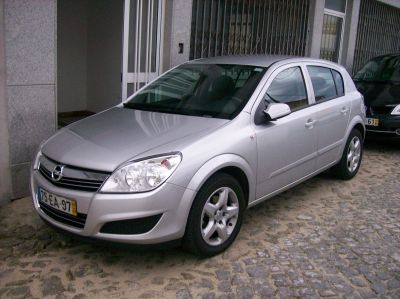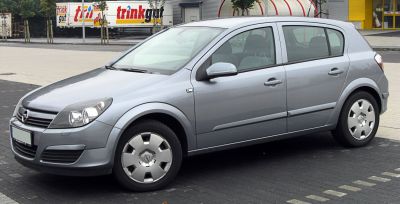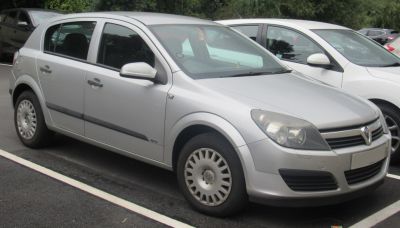 2007 Peugeot 308 I (Phase I, 2007) Dimensions, Size & Specs
2007 Peugeot 308 I (Phase I, 2007) Dimensions, Size & SpecsMeasurements of the 2007 Peugeot 308 I, engineered for optimal performance and comfort
| Dimensions | |
|---|---|
| Length: | 4276 mm168.3 in14.0 ft |
| Width: | 1815 mm71.5 in6.0 ft |
| Width (Opened Mirrors): | 2038 mm80.2 in6.7 ft |
| Height: | 1498 mm59.0 in4.9 ft |
| Trunk Capacity: | 348-430 liter12.3-15.2 cu ft |
| Trunk Capacity (Max): | 1201-1398 liter42.4-49.4 cu ft |
| Weight Specifications | |
| Curb Weight: | 1322-1522 kg2915-3355 lbs |
| Maximal permitted Weight: | 1780-1934 kg3924-4264 lbs |
| Roof Load: | 75 kg165 lbs |
| Tire Specifications | |
| Rims Sizes: | 15-inch rims:
|
| Tire Sizes: |
|
The Peugeot 308 I (Phase I) hatchback, produced between 2007 and 2010, represents a well-balanced compact vehicle ideal for urban and suburban driving. Measuring 4276 mm (168.3 inches) in length and 1815 mm (71.5 inches) in width, the 308 I offers a comfortable cabin space while maintaining maneuverability. When the side mirrors are opened, the width extends to 2038 mm (80.2 inches), which is important to consider for tight parking and narrow streets. The car stands 1498 mm (59 inches) tall, providing a low but practical profile typical of hatchback designs.
Weighing between 1322 kg and 1522 kg (2915 - 3355 lbs) depending on the variant, the Peugeot 308 I maintains a manageable curb weight that contributes to fuel efficiency and performance. The maximum vehicle weight ranges from 1780 to 1934 kg (3925 - 4265 lbs), reflecting its capacity for passengers and cargo combined. The luggage space is notably flexible, starting at 348 liters (12.3 cubic feet) with rear seats upright, and expanding significantly to between 1201 and 1398 liters (42.4 - 49.4 cubic feet) when the rear seats are folded, making it versatile for both daily errands and longer trips.
The Peugeot 308 I supports a roof load of up to 75 kg (165 lbs), allowing for additional cargo such as roof boxes or sports equipment. It rides on various rim sizes, including 15, 16, 17, and 18 inches, paired with tires ranging from 195/65R15 to 225/40R18, ensuring a good balance of ride comfort and handling precision. Overall, the Peugeot 308 I (Phase I) hatchback combines compact exterior dimensions with flexible interior space, making it a practical choice for those seeking a stylish yet functional European compact car from the late 2000s.
Discover the standout features that make the 2007 Peugeot 308 I a leader in its class
Have a question? Please check our knowledgebase first.
The Peugeot 308 I (Phase I, 2007) hatchback measures 4276 mm (168.3 inches) in length, making it a compact vehicle ideal for urban and suburban driving. Its width is 1815 mm (71.5 inches), but with the mirrors opened, the width extends to 2038 mm (80.2 inches), which is important to consider when parking or passing through narrow spaces. The car's height is 1498 mm (59 inches), providing a balanced profile that helps with aerodynamic efficiency and interior headroom.
The curb weight of the Peugeot 308 I varies between 1322 kg to 1522 kg (2915 to 3355 lbs), depending on the trim and equipment. This weight range is relatively moderate for a compact hatchback, helping to strike a balance between fuel efficiency and stable handling. Lighter versions offer better fuel economy and agility in urban traffic, while heavier versions may provide more safety features and better road grip. The weight also influences acceleration and braking performance.
The maximum authorized weight for the Peugeot 308 I ranges from 1780 kg to 1934 kg (3923 to 4265 lbs) based on the variant and equipment. This figure represents the total allowable weight, including the vehicle itself, passengers, cargo, and any additional load. Staying within this limit ensures safe operation, optimal braking, and suspension performance. Overloading beyond this capacity can cause mechanical issues and reduce driving safety.
The Peugeot 308 I offers between 348 and 430 liters (12.3 to 15.2 cubic feet) of luggage capacity with the rear seats upright, providing sufficient space for everyday groceries and small travel luggage. When the rear seats are folded down, this capacity significantly increases to between 1201 and 1398 liters (42.4 to 49.3 cubic feet), allowing for larger items and extended storage needs, making it versatile for family trips or transporting bulky goods.
Yes, the Peugeot 308 I fits comfortably into a standard home garage. Standard garages typically measure around 2400 mm (94.5 inches) in width and 4800 mm (189 inches) in length. With a width of 1815 mm (71.5 inches) and length of 4276 mm (168.3 inches), the 308 I leaves enough room for easy parking and access, although careful attention should be paid when including mirror width, which is 2038 mm (80.2 inches) with mirrors open to avoid scratching.
The Peugeot 308 I is slightly larger and more modern in design compared to its predecessor, the Peugeot 307. While the 308 I measures 4276 mm (168.3 inches) in length, the 307 was approximately 4260 mm (167.7 inches), making the 308 I marginally longer. The width of the 308 I at 1815 mm (71.5 inches) is also slightly wider than the 307, improving shoulder room inside the cabin. Additionally, the 308 I typically offered better luggage capacity and modern engineering upgrades, reflecting Peugeot's move towards a sportier and more refined compact hatchback.
Compared to other compact hatchbacks produced around 2007-2010 like the Volkswagen Golf Mk5 or Ford Focus II, the Peugeot 308 I has competitive dimensions. The Golf Mk5 is approximately 4255 mm to 4283 mm (167.5 to 168.7 inches) in length, and the Ford Focus II about 4350 mm (171.3 inches), placing the 308 I near the middle in terms of length. Its width of 1815 mm (71.5 inches) is slightly wider than some rivals, offering better interior space without making it bulky. This balance makes the 308 I a practical choice in the segment.
The Peugeot 308 I supports various tire and rim sizes to cater to different performance and aesthetic preferences. Rim sizes range from 15 inches (6.5Jx15) up to 18 inches (7.5Jx18), offering a blend of ride comfort and sporty handling. Tire sizes include 195/65R15 91T for a comfortable ride, 205/55R16 91T for a balance of comfort and grip, and sportier 225/45R17 or 225/40R18 options for improved handling and a more aggressive look.
The Peugeot 308 I has a roof load capacity of 75 kg (165 lbs). This means you can safely install roof racks or carriers for additional cargo such as bicycles, skis, or luggage boxes without risking damage or instability. However, it's important not to exceed this limit, as overloading the roof can affect vehicle handling, increase wind resistance, and potentially damage the roof structure.
The Peugeot 308 I's compact exterior dimensions, particularly its length of 4276 mm (168.3 inches) and width of 1815 mm (71.5 inches), make it well-suited for urban environments where tight parking spaces and narrow streets are common. It allows relatively easy parking in city garages and maneuvering in traffic. Additionally, its moderate height of 1498 mm (59 inches) ensures a low profile for better aerodynamics and easier access to parking structures limited by height.
Discover similar sized cars.

| Production: | 2007-2009 |
|---|---|
| Model Year: | 2007 |
| Length: | 4249 mm167.3 in |
| Width: | 2033 mm80.0 in |
| Height: | 1460-1467 mm57.5-57.8 in |

| Production: | 2004-2006 |
|---|---|
| Model Year: | 2004 |
| Length: | 4249 mm167.3 in |
| Width: | 2033 mm80.0 in |
| Height: | 1467 mm57.8 in |

| Production: | 2011-2013 |
|---|---|
| Model Year: | 2011 |
| Length: | 4276 mm168.3 in |
| Width: | 2038 mm80.2 in |
| Height: | 1498 mm59.0 in |

| Production: | 2004-2009 |
|---|---|
| Model Year: | 2004 |
| Length: | 4249 mm167.3 in |
| Width: | 2033 mm80.0 in |
| Height: | 1467 mm57.8 in |

| Production: | 2011-2016 |
|---|---|
| Model Year: | 2012 |
| Length: | 4278 mm168.4 in |
| Width: | 2021 mm79.6 in |
| Height: | 1486 mm58.5 in |

| Production: | 2004-2007 |
|---|---|
| Model Year: | 2004 |
| Length: | 4227 mm166.4 in |
| Width: | 1933 mm76.1 in |
| Height: | 1430 mm56.3 in |

| Production: | 2008-2012 |
|---|---|
| Model Year: | 2008 |
| Length: | 4295 mm169.1 in |
| Width: | 2037 mm80.2 in |
| Height: | 1471-1491 mm57.9-58.7 in |

| Production: | 2006-2011 |
|---|---|
| Model Year: | 2006 |
| Length: | 4255 mm167.5 in |
| Width: | 1765 mm69.5 in |
| Height: | 1460 mm57.5 in |
